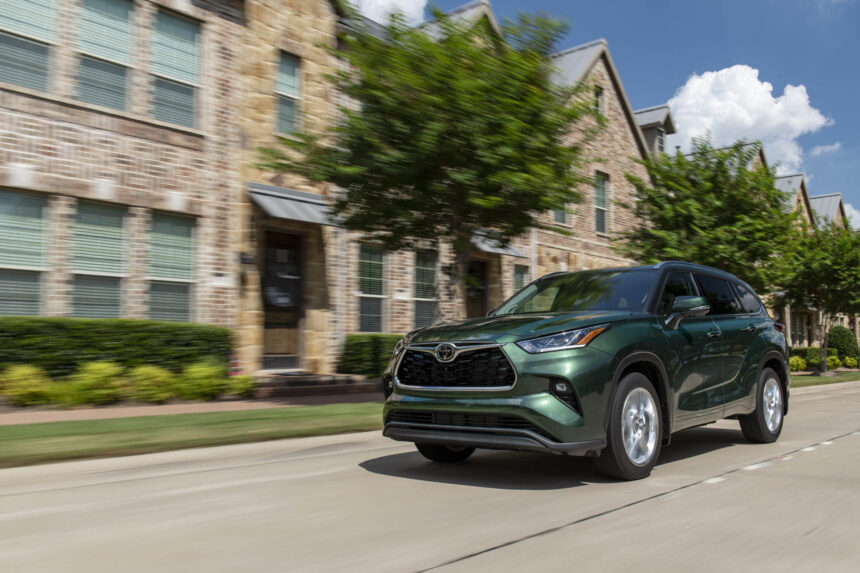The Highlander and Grand Highlander are popular three-row SUVs offered by Toyota. The Grand Highlander was introduced in 2024 with a longer wheelbase, providing more passenger and cargo space similar to a minivan. With a choice of three powertrains, shoppers can find the perfect balance between power and efficiency. Competing with models like the Ford Explorer, Honda Pilot, Kia Telluride, and Jeep Grand Cherokee L, the Highlander lineup offers versatility and performance.
The Highlander Hybrid and Grand Highlander Hybrid are known for their efficiency, ranking among the most fuel-efficient three-row SUVs on the market. Only the Toyota Sienna and plug-in Chrysler Pacifica Hybrid minivans surpass them in terms of efficiency. The 2025 Highlander lineup has received a 7.0 TCC Rating on a 10-point scale.
For the 2025 model year, Toyota has made several changes to the Highlander lineup. All Highlander Hybrid models now come standard with all-wheel drive, the Hybrid LE trims have been discontinued, and front-wheel drive versions of the non-hybrid XSE and Platinum trims are no longer available. The exterior and interior color options have been updated across the range, and a new 25th Anniversary Edition package is exclusive to the Hybrid Limited model.
The Grand Highlander now offers a new base LE trim in both gas and hybrid versions, as well as a Nightshade Edition available on the Limited trim. The Nightshade Edition features blacked-out interior and exterior trim, including black leather upholstery and black-finished 20-inch wheels.
While the Highlander and Grand Highlander have distinct designs, they share a similar overall look. The Highlander has a more rounded and squatter appearance, while the Grand Highlander is more upright and better integrated. Both vehicles feature trapezoidal grilles, slit-style headlights, and unique character lines along the sides.
Inside, the two SUVs offer a tiered dashboard design and wide center consoles. The Highlander comes standard with an 8.0-inch touchscreen, with an option for a larger 12.3-inch screen, while the Grand Highlander comes with the larger screen as standard. Both models offer bronze trim accents for added flair.
The Highlander provides seating for up to eight passengers, with most configurations seating seven due to the option of captain’s chairs in the second row. The Grand Highlander offers a larger cabin with additional wheelbase length, body dimensions, and increased legroom for rear passengers. Both models offer ample storage space and comfortable seating arrangements.
Toyota offers the Highlander with a choice of powertrains, including a 2.4-liter turbo-4 engine, a hybrid powertrain with a combined output of 243 hp, and a Hybrid Max option with a 2.4-liter turbo-4 engine and dual motors for all-wheel drive. The Grand Highlander Hybrid Max can accelerate from 0-60 mph in 6.3 seconds, providing a powerful yet efficient driving experience.
Safety features in the 2025 Toyota Highlander lineup include standard automatic emergency braking, adaptive cruise control, active lane control, and automatic high beams. Blind-spot monitors are standard on higher trims, and optional features include a surround-view camera system and low-speed driver-assist system for congested freeways.
In terms of pricing, the base Toyota Highlander L starts at around $38,000, with additional costs for all-wheel drive and hybrid powertrains. The Grand Highlander XLE trim is priced at approximately $45,000, while the Highlander XLE is slightly cheaper at around $44,000. The top-end Grand Highlander Hybrid Max model costs around $60,000, offering a premium experience but at a higher price point.
The 2025 Toyota Highlander lineup includes L, LE, XLE, XSE, Limited, and Platinum trims, with the Highlander Hybrid skipping the L and LE models. The Grand Highlander trim lineup includes a new LE trim and Nightshade Edition, along with the existing XLE, Limited, and Platinum trims.
Both versions of the Highlander are manufactured in Indiana, providing American-made quality and reliability. With their impressive performance, efficiency, and spacious interiors, the Highlander and Grand Highlander continue to be top choices in the competitive three-row SUV market. The world of technology is constantly evolving, and with each passing day, new advancements are being made that shape the way we live our lives. From smartphones to smart homes, the possibilities are endless when it comes to the ways in which technology can improve our daily routines.
One of the most exciting developments in recent years has been the rise of artificial intelligence, or AI. This cutting-edge technology has the potential to revolutionize the way we interact with our devices, providing us with personalized experiences that cater to our individual needs and preferences.
AI is already being used in a variety of ways, from virtual assistants like Siri and Alexa to self-driving cars and predictive analytics software. But the possibilities for AI are truly limitless, and researchers are constantly finding new ways to harness the power of this technology to improve our lives.
One area where AI is making a significant impact is in the field of healthcare. AI-powered algorithms are being used to analyze medical data and provide insights that can help doctors make more accurate diagnoses and develop personalized treatment plans for patients. This is especially important in the era of personalized medicine, where treatments are tailored to individual patients based on their unique genetic makeup and health history.
In addition to healthcare, AI is also being used in the field of education to provide personalized learning experiences for students. By analyzing data on how students learn and retain information, AI algorithms can create customized lesson plans that cater to each student’s individual strengths and weaknesses. This can help students learn more effectively and improve their academic performance.
AI is also being used in the world of business to streamline operations and improve efficiency. From automated customer service chatbots to predictive analytics software that can forecast market trends, AI is helping companies stay ahead of the competition and make smarter business decisions.
But as exciting as these advancements are, they also raise important ethical questions about the role of AI in society. Issues such as data privacy, algorithmic bias, and job displacement are all hot topics of debate as we navigate the brave new world of artificial intelligence.
Despite these challenges, the future of AI is bright, and the potential for this technology to improve our lives in countless ways is truly awe-inspiring. As researchers continue to push the boundaries of what is possible with AI, we can expect to see even more groundbreaking advancements that will shape the way we live, work, and interact with the world around us.







